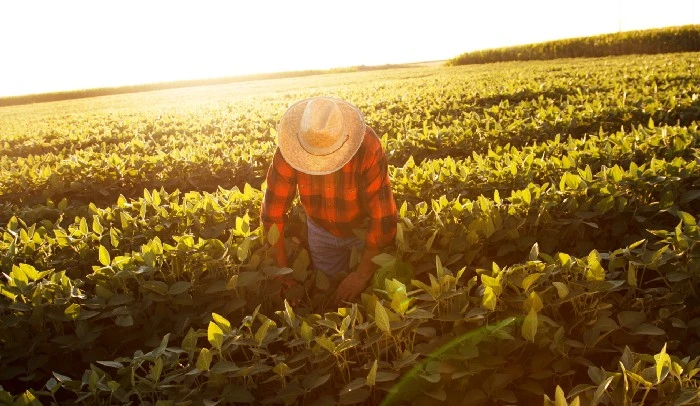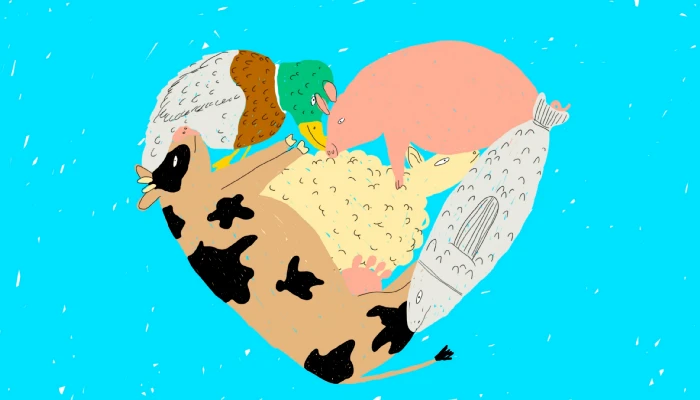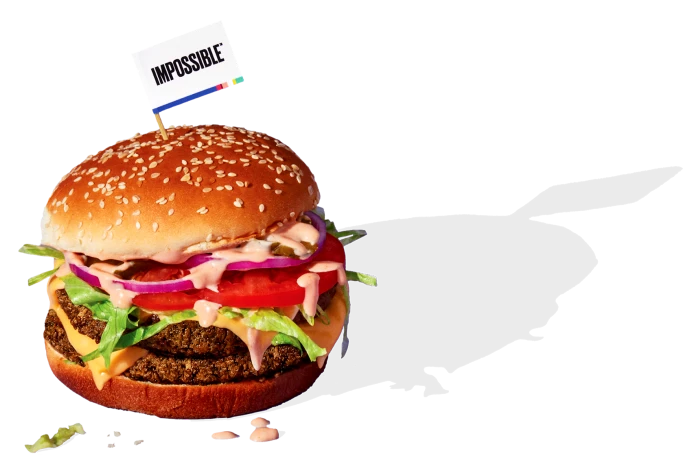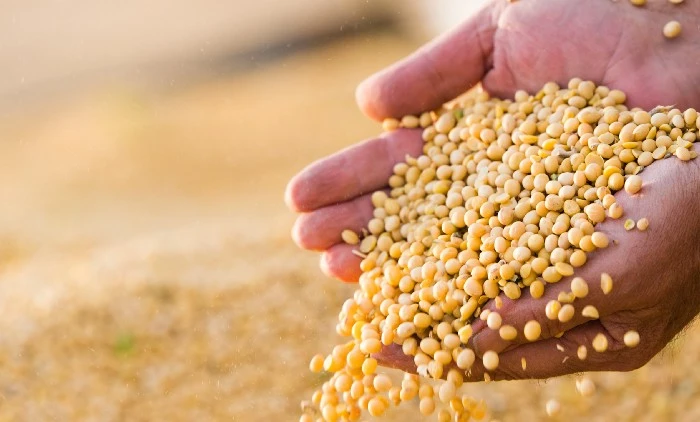Our Commitment To You And Our Planet Led Us To GM Soy As Plant-based Protein
By Pat Brown, CEO & Founder of Impossible Foods

Starting later this month, some of the soy protein used in the Impossible Burger will come from genetically modified soybeans sourced from farms in Iowa, Minnesota and Illinois. Here’s why:
Surging demand for the Impossible Burger is outstripping the available supply of ingredients from domestically grown, non-GM soybeans. Earlier this year, we carried out a comprehensive search for alternative sources to the soy protein that gives our products their beefy texture, excellent nutrition and culinary versatility.
We sought the safest and most environmentally responsible option that would allow us to scale our production and provide the Impossible Burger to consumers at a reasonable cost. And the unambiguous winner was American-grown, milled and processed GM soy that meets the highest global standards for health, safety and sustainability.
This choice allows us to continue making a product that rivals beef(opens in a new tab) for flavor, texture, nutrition and versatility. And it keeps Impossible Foods on target to achieve our mission(opens in a new tab): to end the use of animals in food production by 2035, halting and reversing its catastrophic impact on climate, land, water and the ongoing meltdown in biodiversity(opens in a new tab).
From the start, Impossible Foods has embraced the responsible, constructive use of genetic engineering(opens in a new tab) to solve critical environmental, health, safety and food security problems. We’ve welcomed conversations with the media and public about why we use genetically engineered yeast to produce heme(opens in a new tab), the “magic” molecule that makes meat taste like meat — and makes the Impossible Burger the only plant-based product to deliver the delicious explosion of flavor and aroma that meat-eating consumers crave.

Products made possible by genetic engineering have for many years been pervasive in the foods Americans love (most US cheese, for example(opens in a new tab)) and the medicines (such as insulin(opens in a new tab)) and vaccines on which millions depend. But we know that some people still reflexively oppose any and all use of genetic engineering — no matter the purpose or the scientific consensus about its safety(opens in a new tab).
To avoid getting dragged into these fights, we initially chose to use non-GM soy in formulating the Impossible Burger. But we can no longer in good conscience avoid embracing farming practices used by American farmers on the majority of their cropland(opens in a new tab), and which our careful analysis has conclusively shown to be safe for consumers and better for the environment than the alternatives — especially when the real alternative is increased livestock production.
Compared to beef from a cow, producing the Impossible Burger uses 87% less water, emits 89% fewer greenhouse gases into the atmosphere, contributes 92% less water pollution, and uses 96% less land(opens in a new tab), enabling healthy ecosystems to be restored for nature and biodiversity.
And crucially for critics of GM agriculture and those interested in food and environmental safety: About 80% less herbicide is required to produce the Impossible Burger than an average American cow-derived burger, because of the large amount of crops required to feed a cow to produce beef.
This is the right decision — and an easy one. Noise from anti-genetic engineering fundamentalists is inevitable. But we believe in our consumers and respect their right to consider the facts and decide for themselves.
Impossible Foods was founded in 2011 with a singular goal(opens in a new tab):
To end the use of animals in food production by 2035, halting and reversing its catastrophic impact on climate, land, water and the ongoing meltdown in biodiversity.

Our strategy is simple: Create the world’s most delicious, nutritious, affordable and sustainable meat, fish and dairy foods from plants — and let the market take care of the rest.
In every choice we make, we strive to do the right thing for people and our planet. We only make and sell products that we believe — based on the best available evidence — are better for individual health, public health and the global environment than the products they are intended to replace. We always consider:
Health and Safety: Every ingredient must contribute to a product that is safer and healthier for the consumer than the animal product it replaces. We won’t use it unless we’re confident that it makes our products safer and healthier for consumers.
Functionality: Every ingredient needs to meet the requirements for a delicious product that satisfies people who love and eat meat, dairy and fish. If it’s not delicious enough to compete with the same product from animals, it won’t advance our mission.
Environmental impact: Choosing Impossible Burger over meat from a cow results in vastly lower emissions, water use, crop use and land footprint of diets. For every ingredient, we search diligently for sources and suppliers that minimize harmful impact on environment and farm workers.
Scalability: Every ingredient must be reliably available at sufficient scale to enable us to meet consumer demand.
Cost: The ingredient cost must enable the final product, at scale, to be priced at or below the price of the animal product it replaces. This is the only way to make our products truly accessible.
Our first product, the Impossible Burger, debuted in 2016. It’s now available in more than 7,000 restaurants in the United States and select Asian regions.
Impossible Foods started 2019 with a bang(opens in a new tab).
We launched Impossible Burger 2.0 — the first plant-based product to rival beef(opens in a new tab) for flavor, texture, nutrition and versatility. The launch of our new recipe led to a massive increase in demand in every category where the product is sold: independent restaurants, large restaurant chains, theme parks, museums, stadiums, college campuses and corporate offices. It’s a top-selling item in many restaurants, and sales have tripled in Asia in the past two months alone.

The sales surge far exceeded even our optimistic expectations. In fact, skyrocketing demand has temporarily surpassed our ability to scale production, and we’re currently hiring for a third shift and preparing to install a second production line to double capacity(opens in a new tab) at our plant in Oakland.
One of the most significant changes in our “2.0” recipe was our switch from textured wheat protein to textured soy protein. This single change drove significant improvements across nutrition, texture and culinary versatility.(opens in a new tab) No other protein came close to soy protein in delivering the same qualities.
The surge in demand that followed our launch of 2.0 also forced us to reexamine our supply chain and make it more robust and scalable. We searched the world for the most environmentally responsible, scalable and affordable soy protein. The clear winner was American-grown, milled and processed genetically-modified soy from farms in Iowa, Minnesota and Illinois — grown by farmers committed to the sustainability of their operations.
Soy as a Plant-based Protein is Sustainable, Scalable and Safe.
94% of the soy grown in the US(opens in a new tab) is genetically engineered to resist herbicide toxicity. This helps control weeds without more toxic weed control agents or over-reliance on tillage, which drives soil carbon loss. And because a cow needs to eat about 30 pounds of corn and soy for every pound of beef they produce, far less herbicide is needed to make an Impossible Burger than a burger from a cow.
Most soy-derived products for direct human consumption — including soy milk, baby formula, protein supplements, soybean oil, fortified bread and more — are produced from both GM- and non-GM soy beans, with no difference in safety or nutrition(opens in a new tab).

In fact, the American Association for the Advancement of Science(opens in a new tab) vouched for the safety of genetically modified foods back in 2012:
“The science is quite clear: crop improvement by the modern molecular techniques of biotechnology is safe. Consuming foods containing ingredients derived from GM crops is no riskier than consuming the same foods containing ingredients from crop plants modified by conventional plant improvement techniques.”
A half-decade later, there’s even greater scientific consensus(opens in a new tab) that GMOs are safe(opens in a new tab) for consumers and the environment — a view now endorsed by the American Medical Association(opens in a new tab), the National Academy of Sciences(opens in a new tab) and the World Health Organization(opens in a new tab).
Impossible Foods has always embraced(opens in a new tab) the responsible, constructive use of genetic engineering.
We’ve been transparent from the start about our use of genetically engineered yeast to produce heme(opens in a new tab). We highlight our use of genetic engineering in our online FAQ(opens in a new tab), video(opens in a new tab), news releases(opens in a new tab), special reports(opens in a new tab), blog(opens in a new tab), extensive test data voluntarily filed with the US Food and Drug Administration — with consumers and with media, from the San Francisco Chronicle(opens in a new tab) to Reuters(opens in a new tab), Guardian(opens in a new tab), BBC(opens in a new tab) and many more.
Genetic engineering already plays an essential role in our mission to avert catastrophic climate change and a meltdown in biodiversity. Adding protein from genetically engineered soy — approved by the FDA, USDA, and EPA — to accelerate this essential mission is an embodiment of the core principles that guide everything we do.
As always, we welcome constructive, respectful conversations, and we’re here for your questions at [email protected](opens in a new tab).